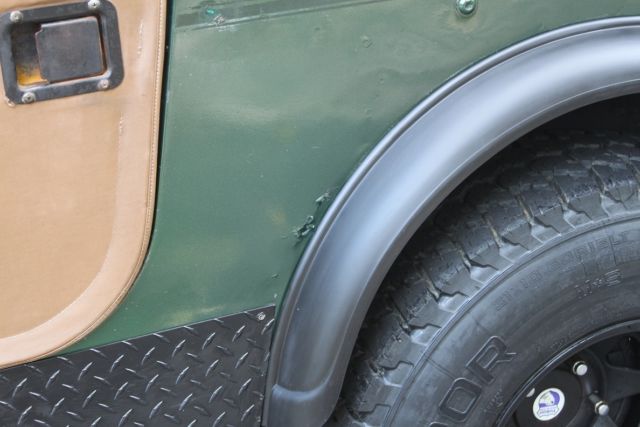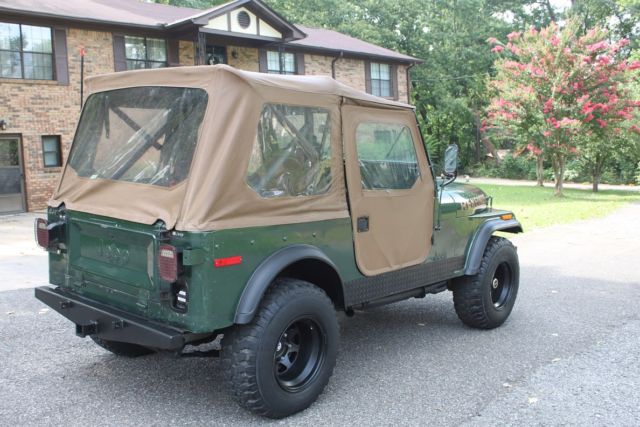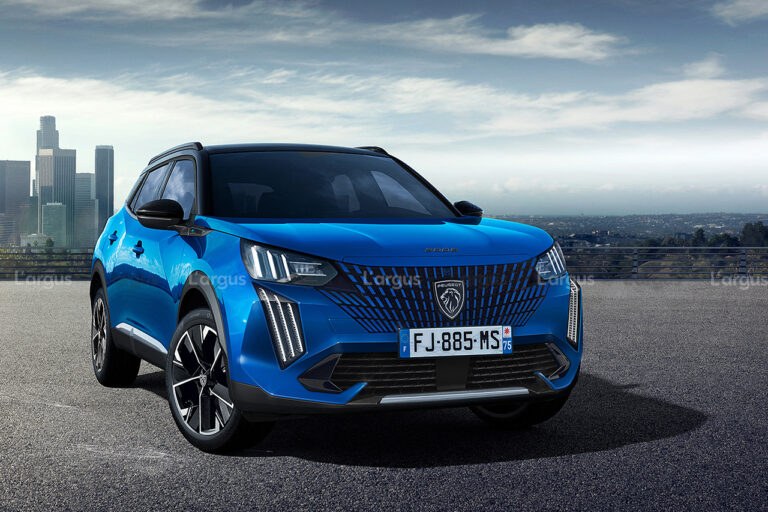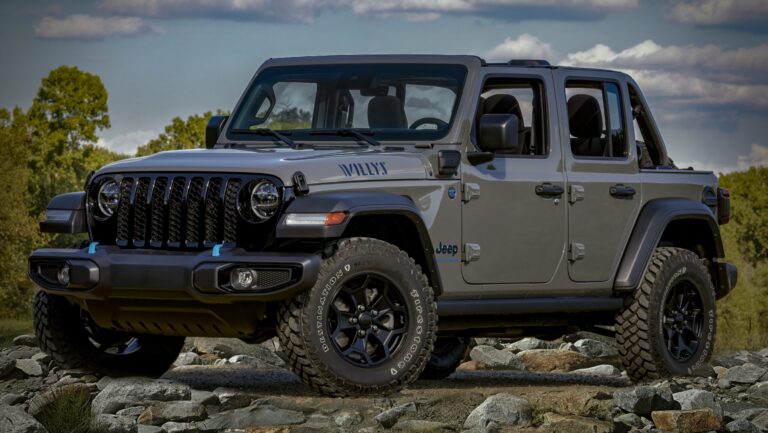1978 Jeep CJ7 Renegade For Sale: Your Guide to Owning an American Icon
1978 Jeep CJ7 Renegade For Sale: Your Guide to Owning an American Icon jeeps.truckstrend.com
The year 1978 conjures images of disco, classic rock, and a burgeoning American spirit. For automotive enthusiasts, it also represents a golden era for one of the most enduring symbols of freedom and adventure: the Jeep CJ7. Specifically, the 1978 Jeep CJ7 Renegade stands out as a highly sought-after classic, embodying the rugged utility and unmistakable style that defines the Jeep brand. More than just a vehicle, a 1978 CJ7 Renegade for sale offers a tangible piece of American history, an open invitation to explore, and a canvas for personalization. This comprehensive guide will navigate the nuances of finding, evaluating, and ultimately owning one of these legendary machines.
The Allure of the 1978 CJ7 Renegade: A Classic Icon Reimagined
1978 Jeep CJ7 Renegade For Sale: Your Guide to Owning an American Icon
The Jeep CJ (Civilian Jeep) series traces its lineage directly back to the military MB Jeeps of World War II. By the 1970s, the CJ-7 had evolved, offering a slightly longer wheelbase than its CJ-5 predecessor, which improved ride quality and stability without sacrificing its legendary off-road prowess. Introduced in 1976, the CJ-7 quickly became a favorite, offering a blend of traditional ruggedness with a touch more comfort and modern amenities.
The "Renegade" trim level, in particular, was the pinnacle of style and features for the CJ-7. In 1978, the Renegade package typically included distinctive exterior graphics, wide chrome wheels, a padded roll bar, special seats, and a tachometer. It often came equipped with the more powerful engine options, such as the AMC 304 V8 or the robust AMC 258 inline-six, paired with various manual or automatic transmissions. This combination of iconic looks, capable performance, and relative rarity makes the 1978 CJ7 Renegade a highly desirable collectible today. It’s a vehicle that sparks conversations, turns heads, and promises endless adventures, whether on the trail or cruising the boulevard.
What to Look For When Buying a 1978 CJ7 Renegade: A Buyer’s Guide
Acquiring a vintage vehicle like a 1978 CJ7 Renegade requires a keen eye and a methodical approach. Decades of use, exposure to elements, and varying levels of maintenance mean that no two Jeeps will be identical. Here’s a detailed checklist of critical areas to inspect:
Body & Frame: The Foundation of Integrity
- Rust: This is the absolute paramount concern for any vintage Jeep. Check the frame rails thoroughly, especially near the front shackle mounts, transmission cross member, and rear spring hangers. Look for rot in the floorboards (driver and passenger sides), rear cargo area, body mounts, wheel wells, and rocker panels. Surface rust is often manageable, but structural rust can be a deal-breaker or require extensive, costly repairs.
- Body Panels: Inspect for dents, dings, and signs of previous accidents or poor bodywork. Check panel gaps and alignment, especially around the doors and hood. Original steel is preferred, but aftermarket fiberglass bodies are common replacements for heavily rusted originals.
- Roll Bar: Ensure it’s securely mounted and free of significant rust or damage.

Engine & Drivetrain: The Heart of the Beast
- Engine Type: Confirm the engine (typically AMC 258 I6 or 304 V8). Check for fluid leaks (oil, coolant, power steering), strange noises (knocks, ticks, excessive lifter noise), and excessive smoke from the exhaust. A cold start is ideal to check for starting issues.
- Transmission: Manual options included the T-150 (3-speed), T-18 (4-speed), T-4 (4-speed), or T-5 (5-speed). Automatic options were the TH400 (heavy-duty) or TF999. Test all gears, listening for grinding, clunking, or difficulty shifting. Ensure the clutch (if manual) engages smoothly.
- Transfer Case: Most 1978 CJ7s would have come with a Dana 20 or, less commonly, a Dana 300 (introduced later but sometimes swapped in). Test engagement of 2WD high, 4WD high, and 4WD low. Listen for unusual noises.
- Axles: Check for fluid leaks at the differentials and listen for howling or clunking sounds during the test drive, which could indicate worn gears or bearings.

Suspension & Steering: Ride Quality and Control

- Leaf Springs & Shocks: Inspect for broken leaves, worn bushings, and leaking shocks. The ride quality will tell you a lot about the suspension’s health.
- Steering: Check for excessive play in the steering wheel. Look for worn tie rod ends, drag link, and steering box leaks. A sloppy steering system can be dangerous and expensive to fix.
- Brakes: Test the brakes thoroughly. Ensure they are firm, stop the vehicle evenly, and don’t pull to one side. Check for leaks in the brake lines and master cylinder.
Interior & Electrical: Comfort and Functionality
- Seats & Upholstery: Assess the condition of the seats for rips, tears, and overall wear.
- Dash & Gauges: Ensure all gauges (speedometer, tachometer, fuel, oil pressure, temp, voltmeter) are functional. Check for cracks in the dash pad.
- Electrical System: Test all lights (headlights, taillights, turn signals, brake lights), wipers, heater/blower motor, and any aftermarket accessories. Look for frayed wires or amateur wiring jobs.
Documentation: History and Legality
- Verify a clear title that matches the VIN on the vehicle.
- Service Records: Any history of maintenance or restoration is a huge plus.
- Originality: If originality is important to you, check for matching numbers (though less critical on Jeeps than some other classics) and period-correct components.
Restoration vs. Daily Driver: Understanding Condition and Value
The price of a 1978 CJ7 Renegade varies dramatically based on its condition. Understanding these categories will help set realistic expectations and budgets.
- Project/Rough: These Jeeps are typically non-running or require significant mechanical and body work. They are the least expensive but demand the most investment in time and money. Ideal for experienced DIYers or those planning a full custom build.
- Driver Quality: These are running and driving vehicles, but they will have flaws. Expect some rust, worn interior components, and perhaps minor mechanical issues. They can be enjoyed immediately but will benefit from ongoing repairs and upgrades.
- Good Original/Survivor: These are well-preserved examples with minimal rust and original components largely intact. They might have minor cosmetic imperfections but are solid mechanically. They command higher prices and are excellent candidates for light restoration or simply enjoying as-is.
- Fully Restored/Show Quality: These Jeeps have undergone extensive, professional restorations, often to better-than-new condition. Every component is new or refurbished. These are the most expensive, often fetching prices comparable to new vehicles, and are suited for collectors or those who want a turn-key classic.
Factors like engine type (V8s generally command more than I6s), transmission (manuals often preferred by purists), and the presence of desirable options (e.g., hardtop, power steering, disc brakes) also influence value.
The Purchasing Process: Tips for a Successful Acquisition
- Where to Look: Online marketplaces (eBay Motors, Bring a Trailer, Craigslist, Facebook Marketplace), dedicated Jeep forums and classic car classifieds, local classic car dealerships, and auctions are common sources.
- Pre-Purchase Inspection (PPI): This is non-negotiable. If you’re serious about a vehicle, pay a trusted, independent mechanic (ideally one familiar with vintage Jeeps) to perform a thorough inspection. Their objective assessment can save you thousands in unexpected repairs.
- Test Drive: Take the Jeep on various roads. Listen for noises, feel for vibrations, check steering response, and evaluate braking performance. Test the 4WD system if possible.
- Negotiation: Be prepared to negotiate. Research comparable sales to understand the market value. Don’t be afraid to walk away if the price doesn’t align with the vehicle’s condition or your budget.
- Transportation: If purchasing remotely, factor in the cost and logistics of shipping the vehicle.
Owning a 1978 CJ7 Renegade: Joys and Considerations
Owning a vintage Jeep CJ7 is a unique experience, offering both immense satisfaction and a few practical considerations.
Benefits:
- Iconic Appeal: It’s instantly recognizable and commands respect from fellow enthusiasts.
- Off-Road Capability: Even in stock form, the CJ7 is a highly capable off-roader.
- Strong Aftermarket: A vast array of parts, upgrades, and customization options are available, making maintenance and personalization relatively easy.
- Community: The Jeep community is passionate and supportive, offering a wealth of knowledge and camaraderie.
- Potential for Appreciation: Well-maintained or restored CJ7s have shown steady appreciation in value over time.
Challenges:
- Rust: Ongoing vigilance against rust is crucial, especially in humid climates or areas where roads are salted.
- Fuel Economy: Don’t expect modern MPG figures. These vehicles were not designed for efficiency.
- Older Technology: Lack of modern safety features (airbags, ABS), and creature comforts.
- Maintenance: While parts are available, these are older vehicles that will require regular maintenance and occasional repairs. They often demand a bit of tinkering.
Maintenance and Customization:
Regular fluid changes, chassis lubrication, and addressing small issues before they become big problems are key. The beauty of the CJ7 is its modular design, allowing for endless customization. From simple lift kits and bigger tires to engine swaps and complete body-off restorations, you can tailor your Renegade to your exact specifications, whether for extreme off-roading, comfortable cruising, or show-stopping appeal.
Price Range for 1978 Jeep CJ7 Renegade (Estimated)
Please note that these are approximate ranges and actual prices can vary significantly based on location, specific features, and market demand.
| Condition | Low (USD) | Average (USD) | High (USD) |
|---|---|---|---|
| Project/Rough | $5,000 | $8,000 | $12,000 |
| Driver Quality | $13,000 | $18,000 | $25,000 |
| Good Original/Survivor | $26,000 | $35,000 | $45,000 |
| Fully Restored/Show Quality | $46,000 | $60,000 | $80,000+ |
Frequently Asked Questions (FAQ) about the 1978 Jeep CJ7 Renegade
Q: Is the 1978 CJ7 Renegade a good daily driver?
A: While it’s possible, a 1978 CJ7 isn’t ideal for daily commuting by modern standards. They lack modern safety features, are less fuel-efficient, and can be noisier and less comfortable on long trips. They shine as weekend cruisers, off-roaders, or special-occasion vehicles.
Q: What are the most common issues with a 1978 CJ7?
A: Rust (especially in the frame and floorboards), worn suspension components, electrical gremlins, and leaks from the engine or transmission are common issues due to age.
Q: Are parts readily available for a 1978 CJ7?
A: Yes, the aftermarket for CJ Jeeps is robust. Most mechanical and body parts are readily available from numerous suppliers, often in both OEM-style and upgraded versions.
Q: What’s the fuel economy like?
A: Expect single-digit or very low double-digit MPG figures. An AMC 258 I6 might get 12-15 MPG, while a 304 V8 could be 8-12 MPG, depending on gearing, tires, and driving style.
Q: Can I take it off-road?
A: Absolutely! The CJ7 was built for off-roading. Even stock, they are very capable. With common modifications like lift kits and larger tires, they can tackle challenging trails.
Q: What’s the difference between a CJ7 and a CJ5?
A: The main difference is the wheelbase. The CJ7 has a 93.5-inch wheelbase, which is 10 inches longer than the CJ5’s 83.5 inches. This longer wheelbase provides a slightly more stable ride and allows for an automatic transmission to be fitted more easily, which was a significant selling point for the CJ7.
Conclusion
The 1978 Jeep CJ7 Renegade for sale represents more than just a classic SUV; it’s an invitation to a lifestyle rooted in adventure, freedom, and a deep appreciation for American automotive heritage. While purchasing one requires careful inspection and a realistic budget, the rewards of owning such an iconic vehicle are immense. With its timeless design, legendary off-road capability, and a vibrant community of enthusiasts, a CJ7 Renegade offers an unparalleled driving experience and a tangible connection to a bygone era. Whether you seek a pristine showpiece, a capable trail rig, or a rolling project to pour your passion into, the 1978 CJ7 Renegade remains a compelling choice for anyone looking to own a true piece of Americana.






